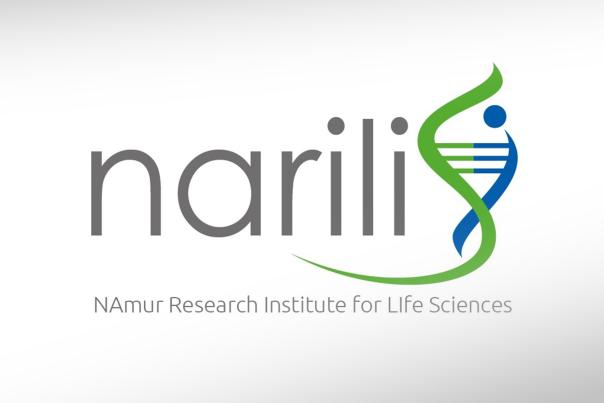NARILIS seeks to stimulate two-way interactions between basic researchers and physicians, and to build bridges between the laboratory and the patient's bedside. NARILIS therefore aims to facilitate the translation of basic research findings into clinical applications. Its mission is to promote multidisciplinary research in order to improve human and animal health and quality of life.
Un pont entre la science fondamentale et la médecine
NARILIS est fondé sur un partenariat entre l'UNamur et le complexe hospitalier CHU UCL Namur.
Grâce à ce partenariat, NARILIS favorise les interactions bidirectionnelles entre les chercheurs orientés vers la recherche fondamentale et ceux orientés vers la recherche clinique, et permet d'établir des passerelles entre le laboratoire et le chevet du patient. NARILIS offre ainsi aux scientifiques l'opportunité de mener des recherches qui ont un impact sur la santé, et finalement de participer au transfert des découvertes scientifiques fondamentales vers des applications cliniques.
Recherche multidisciplinaire et collaborative
NARILIS rassemble des scientifiques de diverses disciplines, notamment des biologistes, des physiciens, des chimistes, des géographes, des pharmaciens et des vétérinaires de l'UNamur, ainsi que des professionnels de la santé humaine du CHU UCL Namur. NARILIS encourage les groupes de recherche à passer du cloisonnement à la synergie et à travailler ensemble pour développer des projets innovants.
Six entités de recherche multidisciplinaires ont été créées au sein de NARILIS :
- Namur Thrombosis & Hemostasis Center (NTHC)
- Centre de Médecine et d'Innovation Médicamenteuse de Namur (NAMEDIC)
- Centre de Nanosécurité de Namur (NNC)
- Pôle de recherche en cancérologie de Namur
- Pôle de recherche en infectiologie de Namur (NaRePI)
- Omnibus Animalibus Studia Sanitatis (OASIS)
Spotlight
News
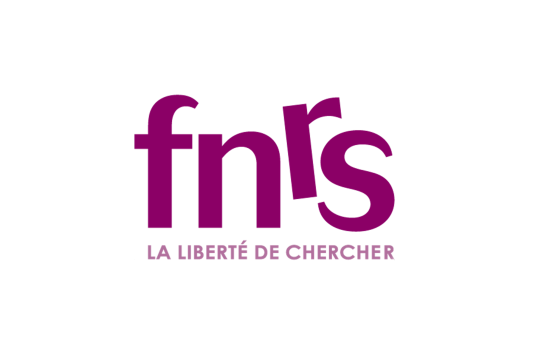
28 new research projects funded by the FNRS
28 new research projects funded by the FNRS
The F.R.S.-FNRS has just published the results of its various 2025 calls for proposals. These include the "Credits & Projects" and "WelCHANGE" calls, as well as the "FRIA" (Fund for Research Training in Industry and Agriculture) and "FRESH" (Fund for Research in the Humanities) calls, which aim to support doctoral theses. What are the results for UNamur? Twenty-eight projects have been selected, demonstrating the quality and richness of research at UNamur.
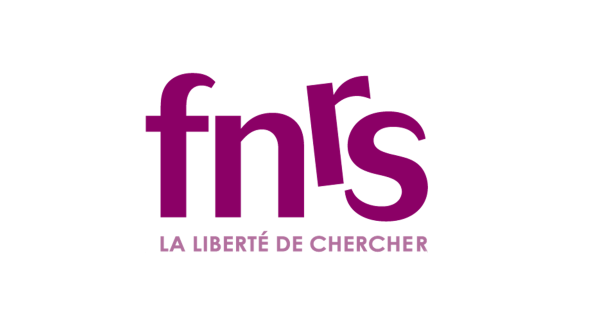
The "Credits & Projects" call for proposals resulted in 12 grants being awarded for ambitious new projects. These include two "equipment" grants, eight "research credits (CDR)" grants, and two "research projects (PDR)" grants, one of which is in collaboration with the ULB. The FRIA call for doctoral research support will fund eleven doctoral scholarships and the FRESH call will fund three.
Two prestigious Scientific Impulse Mandates (MIS) were also obtained. This three-year funding supports young permanent researchers who wish to develop an original and innovative research program by acquiring scientific autonomy within their department.
We would also like to highlight the two projects funded under the "WelCHANGE" call, a funding instrument for research projects with potential societal impact, led by a principal investigator in the humanities and social sciences.
Detailed results
Call for Equipment
- Xavier De Bolle, Narilis Institute, Co-promoter in collaboration with UCLouvain
- Luca Fusaro, NISM Institute
Call for Research Grants (CDR)
- Marc Hennequart, NARILIS Institute
- Nicolas Gillet, NARILIS Institute
- Jean-Yves Matroule, NARILIS Institute
- Patricia Renard, NARILIS Institute
- Francesco Renzi, NARILIS Institute
- Stéphane Vincent, NISM Institute
- Laurence Meurant, NaLTT Institute
- Emma-Louise Silva, NaLTT Institute
Call for Research Projects (PDR)
- Jérémy Dodeigne, Transitions Institute, Co-supervisor in collaboration with ULB
- Luc Henrard, NISM Institute; Co-supervisor: Yoann Olivier, NISM Institute
Fund for Training in Research in Industry and Agriculture (FRIA)
- Emma Bongiovanni - Supervisor: Catherine Michaux, NISM Institute
- Simon Chabot - Supervisor: Carine Michiels, Narilis Institute; Co-supervisor: Anne-Catherine Heuskin, Narilis Institute
- Lee Denis - Supervisor: Muriel Lepère, ILEE Institute
- Maé Desclez - Supervisor: Johan Yans, ILEE Institute; Co-supervisor: Hamed Pourkhorsandi (University of Toulouse)
- Pierre Lombard - Supervisor: Benoît Muylkens, Narilis Institute; Co-supervisor: Damien Coupeau, Narilis Institute
- Amandine Pecquet - Supervisor: Nicolas Gillet, Narilis Institute; Co-supervisor: Damien Coupeau, Narilis Institute
- Kilian Petit - Supervisor: Henri-François Renard, Narilis Institute; Co-supervisor: Xavier De Bolle, Narilis Institute
- Simon Rouxhet - Supervisor: Catherine Michaux, NISM Institute; Co-supervisor: Nicolas Gillet, Narilis Institute
- William Soulié - Supervisor: Yoann Olivier, NISM Institute
- Elisabeth Wanlin - Supervisor: Xavier De Bolle, Narilis Institute
- Laura Willam - Supervisor: Frédérik De Laender, ILEE Institute
Fund for Research in the Humanities (FRESH)
- Louis Droussin - Supervisor: Arthur Borriello, Transitions Institute; Co-supervisor: Vincent Jacquet, Transitions Institute
- Nicolas Larrea Avila - Supervisor: Guilhem Cassan, DeFIPP Institute
- Victor Sluyters – Supervisor: Wafa Hammedi, NADI Institute
- Amandine Leboutte - Co-supervisor: Erika Wauthia (UMons); Co-supervisor: Cédric Vanhoolandt, IRDENa Institute.
Scientific Impulse Mandate (MIS)
- Charlotte Beaudart, Narilis Institute
- Eli Thoré ILEE Institute
WelCHANGE Call
- Nathalie Burnay Transitions Institute, in collaboration with UCLouvain
- Catherine Guirkinger, DeFIPP Institute
Congratulations to all!
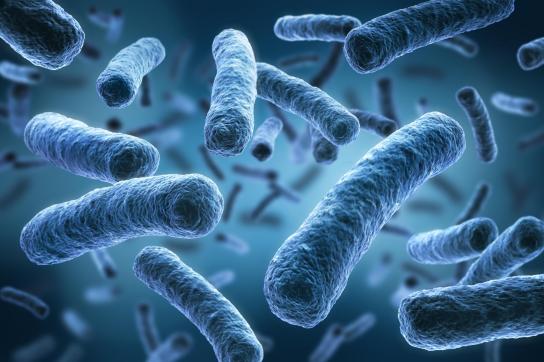
DCF, a molecular weapon against bacterial defenses
DCF, a molecular weapon against bacterial defenses
At a time when bacterial resistance to antibiotics is a public health problem, Professor Stéphane Vincent's team is currently developing dynamic constitutional frameworks (Dynamic Constitutional Frameworks, DCF): a molecular system that would be able to break down certain resistances and thus deliver antibiotics as close as possible to pathogens.

Scientific discoveries are like great stories: they often begin with an encounter. Nearly 20 years ago, Professor Stéphane Vincent of UNamur's Laboratoire de Chimie Bio-Organique, then a young sugar chemist, was in search of something new. During a post-doctorate in Strasbourg, France, in the laboratory of Jean-Marie Lehn, winner of the 1987 Nobel Prize in Chemistry and a specialist in supramolecular chemistry, he befriended another post-doctoral fellow: the Romanian Mihail Barboiu, now a CNRS researcher in Montpellier.
."Research carried out between Montpellier and Strasbourg has given rise to what we call Dynamic Constitutional Frameworks", reveals Stéphane Vincent. "These are molecules that are constantly assembling and disassembling, which gives them interesting properties. Weakly toxic to animal and human cells, DCFs can interact with essential cell components, such as proteins or DNA."

Soon before the Covid-19 pandemic, at a scientific congress, Mihail Barboiu showed Stéphane Vincent the results of his experiments. "He was using DCFs as a kind of transporter, to bring genes (DNA or RNA fragments) into a cell", recalls the chemist. "I then realized that DCFs were positively-charged molecules and readily adapted to DNA, which is negatively-charged. This gave me the idea of using them against bacteria, in the same way as certain antibiotics, which are also positively charged."
An antibacterial turnaround
The two researchers then established an initial research project, with a thesis funded in cotutelle by UNamur, which culminated in 2021 in the publication of the first results showing the antibacterial activity of DCFs. "At the time, I was already working on antibacterial approaches, particularly against Pseudomonas aeruginosa, a major pathogen that forms biofilms", explains Stéphane Vincent.
To combat antiseptics and antibiotics, bacteria proceed in several ways. In addition to developing mechanisms to block the functioning of antibiotics, they are able to aggregate or dock themselves to a surface, for example that of a medical implant, and cover themselves with a complex tangle of all sorts of molecules. The latter, known as biofilm, protects the bacteria from external aggression. These biofilms are a major public health problem, as they enable bacteria to survive even the most powerful antibiotics and are notably the cause of nosocomial diseases, infections contracted during a stay in a healthcare establishment.
"We have shown that certain DCFs are both capable of inhibiting biofilm production, but also of weakening them, thereby exposing bacteria to their environment", summarizes Stéphane Vincent.
The TADAM project, a European alliance!
Bolstered by these results and thanks to C2W, a "very competitive"European program that funds post-doctorates, Stéphane Vincent invited Dmytro Strilets, a Ukrainian chemist who had just completed his thesis under the supervision of Mihail Barboiu, to work in his laboratory on DCFs. The project, called TADAM and carried out in collaboration with researchers Tom Coenye of UGent and Charles Van der Henst of the VUB, then focused on the antibacterial and antibiofilm potential of DCFs against Acinetobacter baumannii, a bacterium which, along with Pseudomonas aeruginosa, is on the list of pathogens of greatest concern defined by the World Health Organization (WHO).
The TADAM project is based on an ingenious assembly: DCFs are associated with special molecules known as pillarenes. The latter form a sort of cage around a proven antibiotic molecule, levofloxacin, thus improving its bioavailability and stability. The DCFs then have the role of inhibiting and disintegrating the biofilm, to enable the pillarenes to deliver their antibiotic directly to the bacteria thus exposed.
The results obtained by Stéphane Vincent's team are spectacular: the DCF-pillararene-antibiotic assembly is up to four times more effective than the antibiotic used alone! Noting that little work had yet been done on the antibiotic effect of these new molecules, the researchers decided to protect their invention by filing a joint patent, before going any further.
For everything still remains to be done. Firstly, because despite more than convincing results, how the assembly works is still obscure. "All the study of the mechanism of action has yet to be done, says Stéphane Vincent. "How is the antibiotic arranged in the pillararene cage? Why do DCFs have antibiofilm activity? How do DCFs and pillararenes fit together? All these questions are important, not only to understand our results, but also to eventually develop new generations of molecules."
And on this point, Stéphane Vincent wants to be particularly cautious. "We all dream, of course, of a universal molecule that will work on all pathogens, but we have to be humble, he pauses. "I've been working with biologists for many years, and I know that biological reality is infinitely more complex than our laboratory conditions. But it's because our results are so encouraging that we must persevere down this path."
The chemist already has several leads: "We're going to test the molecules on bacteria"circulating"suspended in a liquid, which behave very differently. And then we're also going to work on clinical isolates of pathogenic bacteria, to get a little closer to the real conditions under which these biofilms form."
Dmytro Strilets has just received a Chargé de Recherche mandate from the FNRS to develop second-generation DCFs and study their mode of action. The TADAM project has received funding from the University of Namur and the European Union's Horizon 2020 research and innovation program under Marie Skłodowska-Curie grant agreement n°101034383.
This article is taken from the "Eureka" section of Omalius magazine #38 (September 2025).

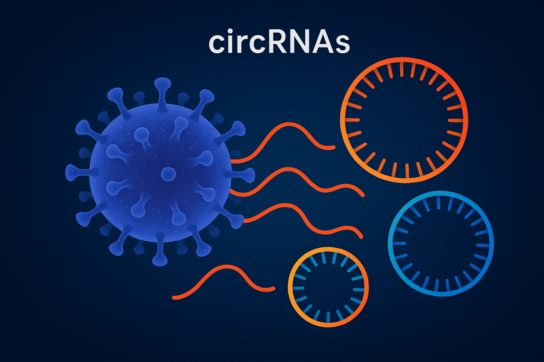
Virology: a major breakthrough thanks to an innovative tool developed by a consortium of UNamur, ULB and ULiège
Virology: a major breakthrough thanks to an innovative tool developed by a consortium of UNamur, ULB and ULiège
Researchers at the Universities of Namur (UNamur), Brussels (ULB) and Liège (ULiège) have just taken a key step towards understanding viral mechanisms. Their study, published in the international scientific journal PLOS Pathogens, focuses on a particular type of molecule produced by viruses, circular RNAs, and presents an innovative bioinformatics tool capable of better identifying them.
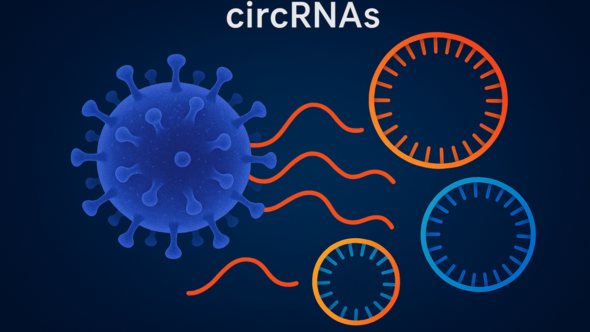
"vCircTrappist": behind this original name lies a tool that marks a turning point in virology research! Developed by PhD student Alexis Chasseur, a member of UNamur's Narilis Institute and now a member of the Karolinska Institute (Sweden), this tool enables the reliable, unbiased identification of circular RNAs generated by a wide range of pathogenic viruses, including herpes viruses, adenoviruses, retroviruses, leukemia viruses and influenza viruses.
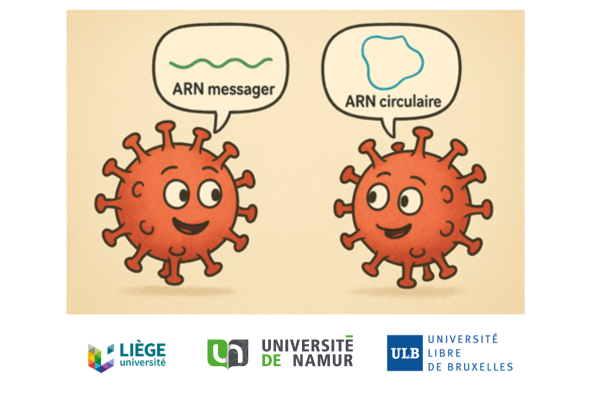
"It's as if we've just discovered a new way for viruses to communicate and parasitize our cells. Understanding this mechanism means entering a new virus language", Alexis Chasseur simplifies.
"Based on new high-throughput RNA sequencing technologies, this circular RNA detection program captures a very large number of events, attesting to the circularization of RNAs produced by viruses," he details. While similar tools already exist in conventional cellular contexts, they focus solely on the detection of circular RNAs produced by conventional mechanisms, different from those of viruses. "vCircTrappist identifies any type of motif involved in RNA circularization and is adapted to the particularities of viral genomes. It thus enables us to discover a new landscape of gene expression by viruses", continues the researcher.
This breakthrough opens up new prospects for better understanding the role of these molecules in viral infections and could, ultimately, contribute to the development of new therapeutic strategies.
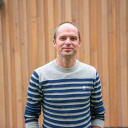
The results obtained reveal that the production of circular RNAs is a widespread phenomenon in viruses, including those associated with cancerous pathologies. This study marks a turning point in our approach to molecular virology. It considerably expands the field of research into viral circular RNAs, which has hitherto been largely underexplored
The study has just been published in PLOS Pathogens, a reference journal ranked Q1 in infectiology and virology, with an impact factor of 6.7 (JCR 2025).
Read more :
Find out more about the objectives of this project in the FNRS magazine of February 2023 (pages 38-39).
The authors of this article are: Alexis S. Chasseur, Maxime Bellefroid, Mathilde Galais, Meijiao Gong, Pierre Lombard, Sarah Mathieu, Amandine Pecquet, Estelle Plant, Camille Ponsard, Laure Vreux, Carlo Yague-Sanz, Benjamin G. Dewals, Nicolas A. Gillet, Benoît Muylkens, Carine M. Van Lint, Damien Coupeau
In search of new circular RNAs
This research, is part of the research project (PDR) funded by the FNRS since January 2023, entitled: "Identification and characterization of viral circular RNAs in cancers and cellular hyperproliferations induced by herpesviruses and lymphotropic retroviruses".
Thanks to close collaboration between the laboratories of Pr Carine Van Lint FNRS Research Director at ULB, Benjamin Dewals Professor at ULiège, Carlo Yague-Sanz, FNRS Scientific Collaborator at UNamur, and Nicolas Gillet, Director of the Department of Veterinary Medicine and member of UNamur's Narilis Institute, this consortium is focusing on the identification and understanding of novel viral circular RNAs and aims to characterize their involvement in viral replication and carcinogenesis.
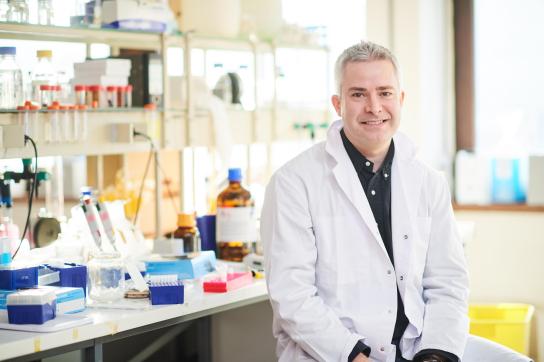
Deciphering resistance mechanisms in liver cancer
Deciphering resistance mechanisms in liver cancer
Hepatocellular carcinoma is the most common primary liver cancer. Unfortunately, this tumor still has a high mortality rate due to the lack of effective treatments for its most advanced or poorly localized forms. As part of a partnership with the CHU UCL Namur - site de Godinne and with the support of Roche Belgium, researchers in the Department of Biomedical Sciences are trying to understand why liver tumor cells are so resistant to treatment, and to identify therapeutic alternatives to better target them.
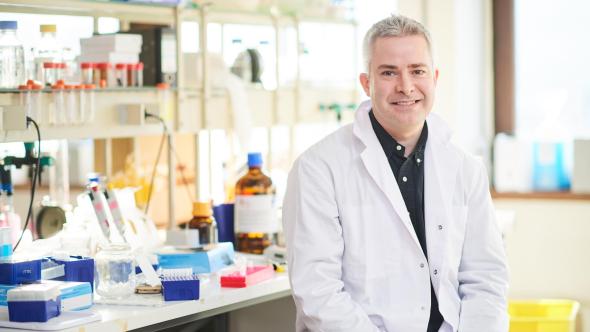
The liver is our body's largest internal organ and plays an essential role in many vital functions such as digestion and detoxification. As a result, although diseased, the liver is very well equipped to resist chemical agents sent into the body to treat it, such as chemotherapy. On the strength of his expertise in the field of multi-drug resistance in cancer, Professor Jean-Pierre Gillet, Director of the Department of Biomedical Sciences and the Laboratory of Molecular Cancer Biology at UNamur, is one of the linchpins of a new research project devoted to the resistance mechanisms of hepatocellular carcinoma conducted in collaboration with Drs. Lionel D'Hondt and Quentin Gilliaux, oncologists at the Medical Oncology Department of CHU UCL Namur - site de Godinne.
Olfactory receptors under the microscope
This project focuses on olfactory receptors, proteins localized in the membrane of sensory neurons in the nasal cavity, but which are also found expressed elsewhere in the body. Beyond their role in odor detection, these receptors have highly interesting properties in terms of treatment: they are, in fact, so-called "highly druggable " therapeutic targets, i.e. particularly receptive to small molecule drugs, but also to biological drugs such as, for example, antibodies. In other words, they are excellent candidates for the development of drugs that can bind to them effectively and modulate their function to produce the desired therapeutic effect. Based on the existing literature and Professor Gillet's previous work on liver cancer, the following question arose: would olfactory receptors be specifically expressed in liver tumors and, if so, play a role in their development and mechanisms of resistance to treatment?
To answer this question, an interdisciplinary collaboration was set up between various partners. The Biobank of the CHU UCL Namur in Godinne, which preserves tissue samples taken in particular during tumor removal, made it possible to build up a representative collection of healthy livers, diseased (cirrhotic) livers and liver tumor tissue. Messenger RNA was extracted from these three types of tissue, then sequenced (a method which identifies the genes expressed in the cells). Data analysis was then carried out at Namur Molecular Tech, a molecular biology technology platform located on the Godinne university site and directed by Dr Degosserie. This work led to the identification of six olfactory receptors specifically expressed in tumor cells, and hitherto little studied. They are therefore promising candidates for further investigation of the original hypothesis: deciphering the role of these receptors in the development of treatment-resistant liver tumors.
Support from Roche Belgium
Thanks to their joint expertise and the innovative nature of their research, UNamur and CHU UCL Namur - site de Godinne have been awarded a €50,000 grant to further explore the role of these six olfactory receptors. In collaboration with the CHU Research Laboratory and in particular Dr Morgane Canonne, the UNamur Cancer Molecular Biology Laboratory is currently developing in vitro models, such as organoids, or mini-organ, from liver tumor biopsies. These models will make it possible to test the biological role of olfactory receptors within the cell: does the expression of these receptors in tumor cells induce an increase in their proliferation or aggressiveness? Do they accelerate the generation of metastases in other tissues? Or, on the contrary, does a lack of activation of these receptors contribute to these mechanisms? Depending on the answers to these questions, it will be possible to assess whether these receptors constitute good therapeutic targets within the primary liver tumor, with a view to blocking its metastatic capacity or slowing its development. The ultimate aim is to test targeted treatments on cells from these models, with a view to developing therapeutic alternatives that will offer new hope for patients.
.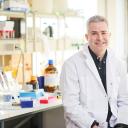
This project is the result of an excellent collaboration between different partners who, together, each have their own role to play.
NARILIS, a bridge between hospital and university
Founded in 2010, the Namur Research Institute In Life Sciences (NARILIS) brings together the University of Namur and the CHU UCL Namur - site de Godinne. It brings CHU doctors into dialogue with scientists from a variety of backgrounds, with a resolutely interdisciplinary outlook.
This article was published in the Fond Namur Université newsletter.

28 new research projects funded by the FNRS
28 new research projects funded by the FNRS
The F.R.S.-FNRS has just published the results of its various 2025 calls for proposals. These include the "Credits & Projects" and "WelCHANGE" calls, as well as the "FRIA" (Fund for Research Training in Industry and Agriculture) and "FRESH" (Fund for Research in the Humanities) calls, which aim to support doctoral theses. What are the results for UNamur? Twenty-eight projects have been selected, demonstrating the quality and richness of research at UNamur.

The "Credits & Projects" call for proposals resulted in 12 grants being awarded for ambitious new projects. These include two "equipment" grants, eight "research credits (CDR)" grants, and two "research projects (PDR)" grants, one of which is in collaboration with the ULB. The FRIA call for doctoral research support will fund eleven doctoral scholarships and the FRESH call will fund three.
Two prestigious Scientific Impulse Mandates (MIS) were also obtained. This three-year funding supports young permanent researchers who wish to develop an original and innovative research program by acquiring scientific autonomy within their department.
We would also like to highlight the two projects funded under the "WelCHANGE" call, a funding instrument for research projects with potential societal impact, led by a principal investigator in the humanities and social sciences.
Detailed results
Call for Equipment
- Xavier De Bolle, Narilis Institute, Co-promoter in collaboration with UCLouvain
- Luca Fusaro, NISM Institute
Call for Research Grants (CDR)
- Marc Hennequart, NARILIS Institute
- Nicolas Gillet, NARILIS Institute
- Jean-Yves Matroule, NARILIS Institute
- Patricia Renard, NARILIS Institute
- Francesco Renzi, NARILIS Institute
- Stéphane Vincent, NISM Institute
- Laurence Meurant, NaLTT Institute
- Emma-Louise Silva, NaLTT Institute
Call for Research Projects (PDR)
- Jérémy Dodeigne, Transitions Institute, Co-supervisor in collaboration with ULB
- Luc Henrard, NISM Institute; Co-supervisor: Yoann Olivier, NISM Institute
Fund for Training in Research in Industry and Agriculture (FRIA)
- Emma Bongiovanni - Supervisor: Catherine Michaux, NISM Institute
- Simon Chabot - Supervisor: Carine Michiels, Narilis Institute; Co-supervisor: Anne-Catherine Heuskin, Narilis Institute
- Lee Denis - Supervisor: Muriel Lepère, ILEE Institute
- Maé Desclez - Supervisor: Johan Yans, ILEE Institute; Co-supervisor: Hamed Pourkhorsandi (University of Toulouse)
- Pierre Lombard - Supervisor: Benoît Muylkens, Narilis Institute; Co-supervisor: Damien Coupeau, Narilis Institute
- Amandine Pecquet - Supervisor: Nicolas Gillet, Narilis Institute; Co-supervisor: Damien Coupeau, Narilis Institute
- Kilian Petit - Supervisor: Henri-François Renard, Narilis Institute; Co-supervisor: Xavier De Bolle, Narilis Institute
- Simon Rouxhet - Supervisor: Catherine Michaux, NISM Institute; Co-supervisor: Nicolas Gillet, Narilis Institute
- William Soulié - Supervisor: Yoann Olivier, NISM Institute
- Elisabeth Wanlin - Supervisor: Xavier De Bolle, Narilis Institute
- Laura Willam - Supervisor: Frédérik De Laender, ILEE Institute
Fund for Research in the Humanities (FRESH)
- Louis Droussin - Supervisor: Arthur Borriello, Transitions Institute; Co-supervisor: Vincent Jacquet, Transitions Institute
- Nicolas Larrea Avila - Supervisor: Guilhem Cassan, DeFIPP Institute
- Victor Sluyters – Supervisor: Wafa Hammedi, NADI Institute
- Amandine Leboutte - Co-supervisor: Erika Wauthia (UMons); Co-supervisor: Cédric Vanhoolandt, IRDENa Institute.
Scientific Impulse Mandate (MIS)
- Charlotte Beaudart, Narilis Institute
- Eli Thoré ILEE Institute
WelCHANGE Call
- Nathalie Burnay Transitions Institute, in collaboration with UCLouvain
- Catherine Guirkinger, DeFIPP Institute
Congratulations to all!

DCF, a molecular weapon against bacterial defenses
DCF, a molecular weapon against bacterial defenses
At a time when bacterial resistance to antibiotics is a public health problem, Professor Stéphane Vincent's team is currently developing dynamic constitutional frameworks (Dynamic Constitutional Frameworks, DCF): a molecular system that would be able to break down certain resistances and thus deliver antibiotics as close as possible to pathogens.

Scientific discoveries are like great stories: they often begin with an encounter. Nearly 20 years ago, Professor Stéphane Vincent of UNamur's Laboratoire de Chimie Bio-Organique, then a young sugar chemist, was in search of something new. During a post-doctorate in Strasbourg, France, in the laboratory of Jean-Marie Lehn, winner of the 1987 Nobel Prize in Chemistry and a specialist in supramolecular chemistry, he befriended another post-doctoral fellow: the Romanian Mihail Barboiu, now a CNRS researcher in Montpellier.
."Research carried out between Montpellier and Strasbourg has given rise to what we call Dynamic Constitutional Frameworks", reveals Stéphane Vincent. "These are molecules that are constantly assembling and disassembling, which gives them interesting properties. Weakly toxic to animal and human cells, DCFs can interact with essential cell components, such as proteins or DNA."

Soon before the Covid-19 pandemic, at a scientific congress, Mihail Barboiu showed Stéphane Vincent the results of his experiments. "He was using DCFs as a kind of transporter, to bring genes (DNA or RNA fragments) into a cell", recalls the chemist. "I then realized that DCFs were positively-charged molecules and readily adapted to DNA, which is negatively-charged. This gave me the idea of using them against bacteria, in the same way as certain antibiotics, which are also positively charged."
An antibacterial turnaround
The two researchers then established an initial research project, with a thesis funded in cotutelle by UNamur, which culminated in 2021 in the publication of the first results showing the antibacterial activity of DCFs. "At the time, I was already working on antibacterial approaches, particularly against Pseudomonas aeruginosa, a major pathogen that forms biofilms", explains Stéphane Vincent.
To combat antiseptics and antibiotics, bacteria proceed in several ways. In addition to developing mechanisms to block the functioning of antibiotics, they are able to aggregate or dock themselves to a surface, for example that of a medical implant, and cover themselves with a complex tangle of all sorts of molecules. The latter, known as biofilm, protects the bacteria from external aggression. These biofilms are a major public health problem, as they enable bacteria to survive even the most powerful antibiotics and are notably the cause of nosocomial diseases, infections contracted during a stay in a healthcare establishment.
"We have shown that certain DCFs are both capable of inhibiting biofilm production, but also of weakening them, thereby exposing bacteria to their environment", summarizes Stéphane Vincent.
The TADAM project, a European alliance!
Bolstered by these results and thanks to C2W, a "very competitive"European program that funds post-doctorates, Stéphane Vincent invited Dmytro Strilets, a Ukrainian chemist who had just completed his thesis under the supervision of Mihail Barboiu, to work in his laboratory on DCFs. The project, called TADAM and carried out in collaboration with researchers Tom Coenye of UGent and Charles Van der Henst of the VUB, then focused on the antibacterial and antibiofilm potential of DCFs against Acinetobacter baumannii, a bacterium which, along with Pseudomonas aeruginosa, is on the list of pathogens of greatest concern defined by the World Health Organization (WHO).
The TADAM project is based on an ingenious assembly: DCFs are associated with special molecules known as pillarenes. The latter form a sort of cage around a proven antibiotic molecule, levofloxacin, thus improving its bioavailability and stability. The DCFs then have the role of inhibiting and disintegrating the biofilm, to enable the pillarenes to deliver their antibiotic directly to the bacteria thus exposed.
The results obtained by Stéphane Vincent's team are spectacular: the DCF-pillararene-antibiotic assembly is up to four times more effective than the antibiotic used alone! Noting that little work had yet been done on the antibiotic effect of these new molecules, the researchers decided to protect their invention by filing a joint patent, before going any further.
For everything still remains to be done. Firstly, because despite more than convincing results, how the assembly works is still obscure. "All the study of the mechanism of action has yet to be done, says Stéphane Vincent. "How is the antibiotic arranged in the pillararene cage? Why do DCFs have antibiofilm activity? How do DCFs and pillararenes fit together? All these questions are important, not only to understand our results, but also to eventually develop new generations of molecules."
And on this point, Stéphane Vincent wants to be particularly cautious. "We all dream, of course, of a universal molecule that will work on all pathogens, but we have to be humble, he pauses. "I've been working with biologists for many years, and I know that biological reality is infinitely more complex than our laboratory conditions. But it's because our results are so encouraging that we must persevere down this path."
The chemist already has several leads: "We're going to test the molecules on bacteria"circulating"suspended in a liquid, which behave very differently. And then we're also going to work on clinical isolates of pathogenic bacteria, to get a little closer to the real conditions under which these biofilms form."
Dmytro Strilets has just received a Chargé de Recherche mandate from the FNRS to develop second-generation DCFs and study their mode of action. The TADAM project has received funding from the University of Namur and the European Union's Horizon 2020 research and innovation program under Marie Skłodowska-Curie grant agreement n°101034383.
This article is taken from the "Eureka" section of Omalius magazine #38 (September 2025).


Virology: a major breakthrough thanks to an innovative tool developed by a consortium of UNamur, ULB and ULiège
Virology: a major breakthrough thanks to an innovative tool developed by a consortium of UNamur, ULB and ULiège
Researchers at the Universities of Namur (UNamur), Brussels (ULB) and Liège (ULiège) have just taken a key step towards understanding viral mechanisms. Their study, published in the international scientific journal PLOS Pathogens, focuses on a particular type of molecule produced by viruses, circular RNAs, and presents an innovative bioinformatics tool capable of better identifying them.

"vCircTrappist": behind this original name lies a tool that marks a turning point in virology research! Developed by PhD student Alexis Chasseur, a member of UNamur's Narilis Institute and now a member of the Karolinska Institute (Sweden), this tool enables the reliable, unbiased identification of circular RNAs generated by a wide range of pathogenic viruses, including herpes viruses, adenoviruses, retroviruses, leukemia viruses and influenza viruses.

"It's as if we've just discovered a new way for viruses to communicate and parasitize our cells. Understanding this mechanism means entering a new virus language", Alexis Chasseur simplifies.
"Based on new high-throughput RNA sequencing technologies, this circular RNA detection program captures a very large number of events, attesting to the circularization of RNAs produced by viruses," he details. While similar tools already exist in conventional cellular contexts, they focus solely on the detection of circular RNAs produced by conventional mechanisms, different from those of viruses. "vCircTrappist identifies any type of motif involved in RNA circularization and is adapted to the particularities of viral genomes. It thus enables us to discover a new landscape of gene expression by viruses", continues the researcher.
This breakthrough opens up new prospects for better understanding the role of these molecules in viral infections and could, ultimately, contribute to the development of new therapeutic strategies.

The results obtained reveal that the production of circular RNAs is a widespread phenomenon in viruses, including those associated with cancerous pathologies. This study marks a turning point in our approach to molecular virology. It considerably expands the field of research into viral circular RNAs, which has hitherto been largely underexplored
The study has just been published in PLOS Pathogens, a reference journal ranked Q1 in infectiology and virology, with an impact factor of 6.7 (JCR 2025).
Read more :
Find out more about the objectives of this project in the FNRS magazine of February 2023 (pages 38-39).
The authors of this article are: Alexis S. Chasseur, Maxime Bellefroid, Mathilde Galais, Meijiao Gong, Pierre Lombard, Sarah Mathieu, Amandine Pecquet, Estelle Plant, Camille Ponsard, Laure Vreux, Carlo Yague-Sanz, Benjamin G. Dewals, Nicolas A. Gillet, Benoît Muylkens, Carine M. Van Lint, Damien Coupeau
In search of new circular RNAs
This research, is part of the research project (PDR) funded by the FNRS since January 2023, entitled: "Identification and characterization of viral circular RNAs in cancers and cellular hyperproliferations induced by herpesviruses and lymphotropic retroviruses".
Thanks to close collaboration between the laboratories of Pr Carine Van Lint FNRS Research Director at ULB, Benjamin Dewals Professor at ULiège, Carlo Yague-Sanz, FNRS Scientific Collaborator at UNamur, and Nicolas Gillet, Director of the Department of Veterinary Medicine and member of UNamur's Narilis Institute, this consortium is focusing on the identification and understanding of novel viral circular RNAs and aims to characterize their involvement in viral replication and carcinogenesis.

Deciphering resistance mechanisms in liver cancer
Deciphering resistance mechanisms in liver cancer
Hepatocellular carcinoma is the most common primary liver cancer. Unfortunately, this tumor still has a high mortality rate due to the lack of effective treatments for its most advanced or poorly localized forms. As part of a partnership with the CHU UCL Namur - site de Godinne and with the support of Roche Belgium, researchers in the Department of Biomedical Sciences are trying to understand why liver tumor cells are so resistant to treatment, and to identify therapeutic alternatives to better target them.

The liver is our body's largest internal organ and plays an essential role in many vital functions such as digestion and detoxification. As a result, although diseased, the liver is very well equipped to resist chemical agents sent into the body to treat it, such as chemotherapy. On the strength of his expertise in the field of multi-drug resistance in cancer, Professor Jean-Pierre Gillet, Director of the Department of Biomedical Sciences and the Laboratory of Molecular Cancer Biology at UNamur, is one of the linchpins of a new research project devoted to the resistance mechanisms of hepatocellular carcinoma conducted in collaboration with Drs. Lionel D'Hondt and Quentin Gilliaux, oncologists at the Medical Oncology Department of CHU UCL Namur - site de Godinne.
Olfactory receptors under the microscope
This project focuses on olfactory receptors, proteins localized in the membrane of sensory neurons in the nasal cavity, but which are also found expressed elsewhere in the body. Beyond their role in odor detection, these receptors have highly interesting properties in terms of treatment: they are, in fact, so-called "highly druggable " therapeutic targets, i.e. particularly receptive to small molecule drugs, but also to biological drugs such as, for example, antibodies. In other words, they are excellent candidates for the development of drugs that can bind to them effectively and modulate their function to produce the desired therapeutic effect. Based on the existing literature and Professor Gillet's previous work on liver cancer, the following question arose: would olfactory receptors be specifically expressed in liver tumors and, if so, play a role in their development and mechanisms of resistance to treatment?
To answer this question, an interdisciplinary collaboration was set up between various partners. The Biobank of the CHU UCL Namur in Godinne, which preserves tissue samples taken in particular during tumor removal, made it possible to build up a representative collection of healthy livers, diseased (cirrhotic) livers and liver tumor tissue. Messenger RNA was extracted from these three types of tissue, then sequenced (a method which identifies the genes expressed in the cells). Data analysis was then carried out at Namur Molecular Tech, a molecular biology technology platform located on the Godinne university site and directed by Dr Degosserie. This work led to the identification of six olfactory receptors specifically expressed in tumor cells, and hitherto little studied. They are therefore promising candidates for further investigation of the original hypothesis: deciphering the role of these receptors in the development of treatment-resistant liver tumors.
Support from Roche Belgium
Thanks to their joint expertise and the innovative nature of their research, UNamur and CHU UCL Namur - site de Godinne have been awarded a €50,000 grant to further explore the role of these six olfactory receptors. In collaboration with the CHU Research Laboratory and in particular Dr Morgane Canonne, the UNamur Cancer Molecular Biology Laboratory is currently developing in vitro models, such as organoids, or mini-organ, from liver tumor biopsies. These models will make it possible to test the biological role of olfactory receptors within the cell: does the expression of these receptors in tumor cells induce an increase in their proliferation or aggressiveness? Do they accelerate the generation of metastases in other tissues? Or, on the contrary, does a lack of activation of these receptors contribute to these mechanisms? Depending on the answers to these questions, it will be possible to assess whether these receptors constitute good therapeutic targets within the primary liver tumor, with a view to blocking its metastatic capacity or slowing its development. The ultimate aim is to test targeted treatments on cells from these models, with a view to developing therapeutic alternatives that will offer new hope for patients.
.
This project is the result of an excellent collaboration between different partners who, together, each have their own role to play.
NARILIS, a bridge between hospital and university
Founded in 2010, the Namur Research Institute In Life Sciences (NARILIS) brings together the University of Namur and the CHU UCL Namur - site de Godinne. It brings CHU doctors into dialogue with scientists from a variety of backgrounds, with a resolutely interdisciplinary outlook.
This article was published in the Fond Namur Université newsletter.
Agenda
IBAF Conference 2026
Sixteen years after hosting the 2010 edition, UNamur is delighted to revive this scientific tradition and welcome the 11th edition of the Rencontres Ion Beam Applications Francophones (IBAF). This edition will be organized by scientists from the UNamur Physics Department who are active in the fields of materials science, biophysics, and interdisciplinary applications of ion beams.

The IBAF Meetings have been organized since 2003, every two years since 2008, by the Ion Beams Division of the French Vacuum Society (SFV), the oldest national vacuum society in the world, which celebrated its 80th anniversary in 2025.
As in previous editions, IBAF 2026 will offer a rich and varied program with guest lectures, oral and poster presentations, and technical sessions. All this will be complemented by an industrial presence to promote exchanges between research and innovation.
The conference will cover a wide range of topics, from ion beam instruments and techniques to the physics of ion-matter interactions, including the analysis and modification of materials, applications in the life sciences, earth and environmental sciences, and heritage sciences.
Ce contenu est en cours de migration. Retrouvez toutes les informations utiles sur le site web externe de l'Institut Narilis.
